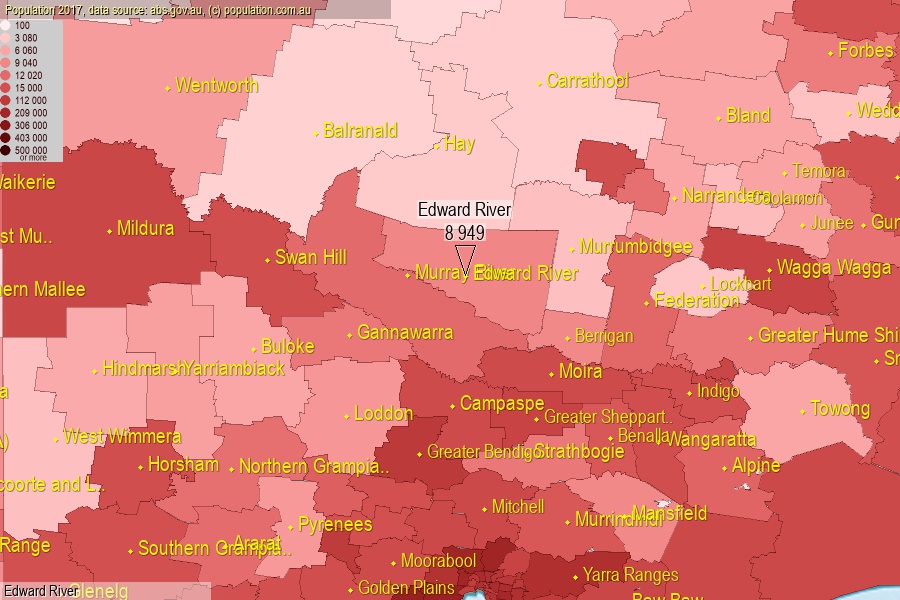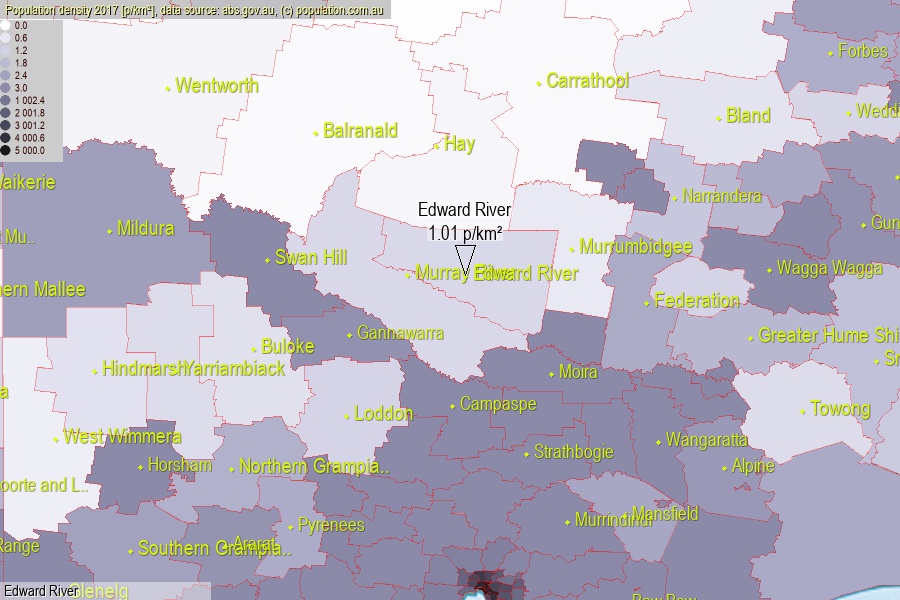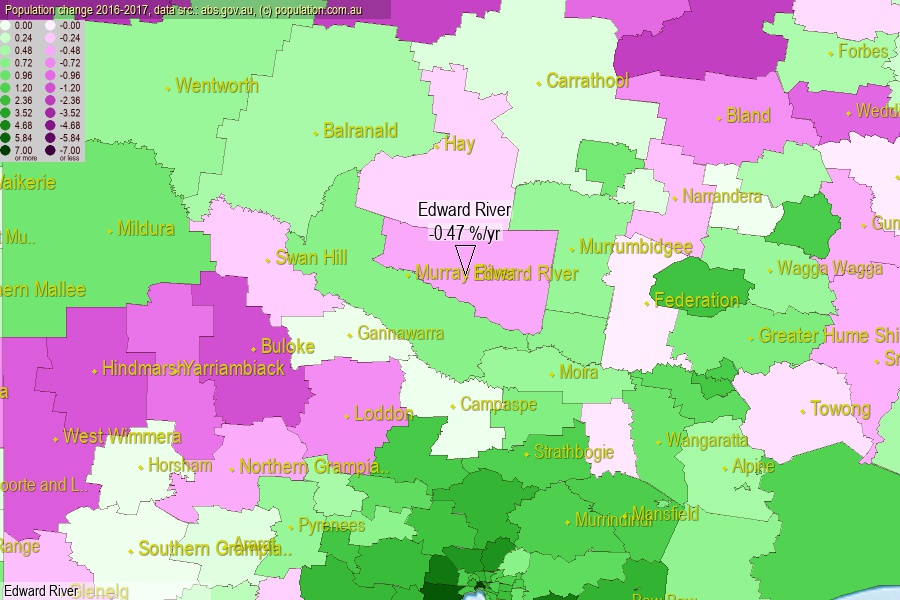 population.com.au
population.com.auLast official estimated population of Edward River Area (as Local Government Area) was 8 949 people (on 2017-06-30)[2]. This was 0.04% of total Australian population and 0.112% of NSW population. Area of Edward River is 8 883.40 km², in this year population density was 1.01 p/km² . If population growth rate would be same as in period 2016-2017 (-0.47%/yr), Edward River population in 2025 would be 8 620. [0]



Click to enlarge. Edward River is located in the center of the images.
Population [people], population density [p./km²] and population change [%/year] [2]
[1996-2001] +0.12 %/Y
[2001-2002] -1.15 %/Y
[2002-2003] -1.61 %/Y
[2003-2004] -1.99 %/Y
[2004-2005] -1.70 %/Y
[2005-2006] -1.62 %/Y
[2006-2007] -0.64 %/Y
[2007-2008] -1.28 %/Y
[2008-2009] -0.42 %/Y
[2009-2010] -1.09 %/Y
[2010-2011] -0.95 %/Y
[2011-2012] +0.28 %/Y
[2012-2013] +0.18 %/Y
[2013-2014] +0.37 %/Y
[2014-2015] +0.56 %/Y
[2015-2016] -0.23 %/Y
[2016-2017] -0.47 %/Y
[0] Calculated with linear interpolation from officially estimated population
[1] Read more about LGA and Australian Statistical Geography Standard (ASGS) on abs.gov.au
[2] Population data from Australian Bureau of Statistics (Population and density: 2017; change: 2016-2017)
[3] Digital Boundaries: Australian Statistical Geography Standard (ASGS) 2016.